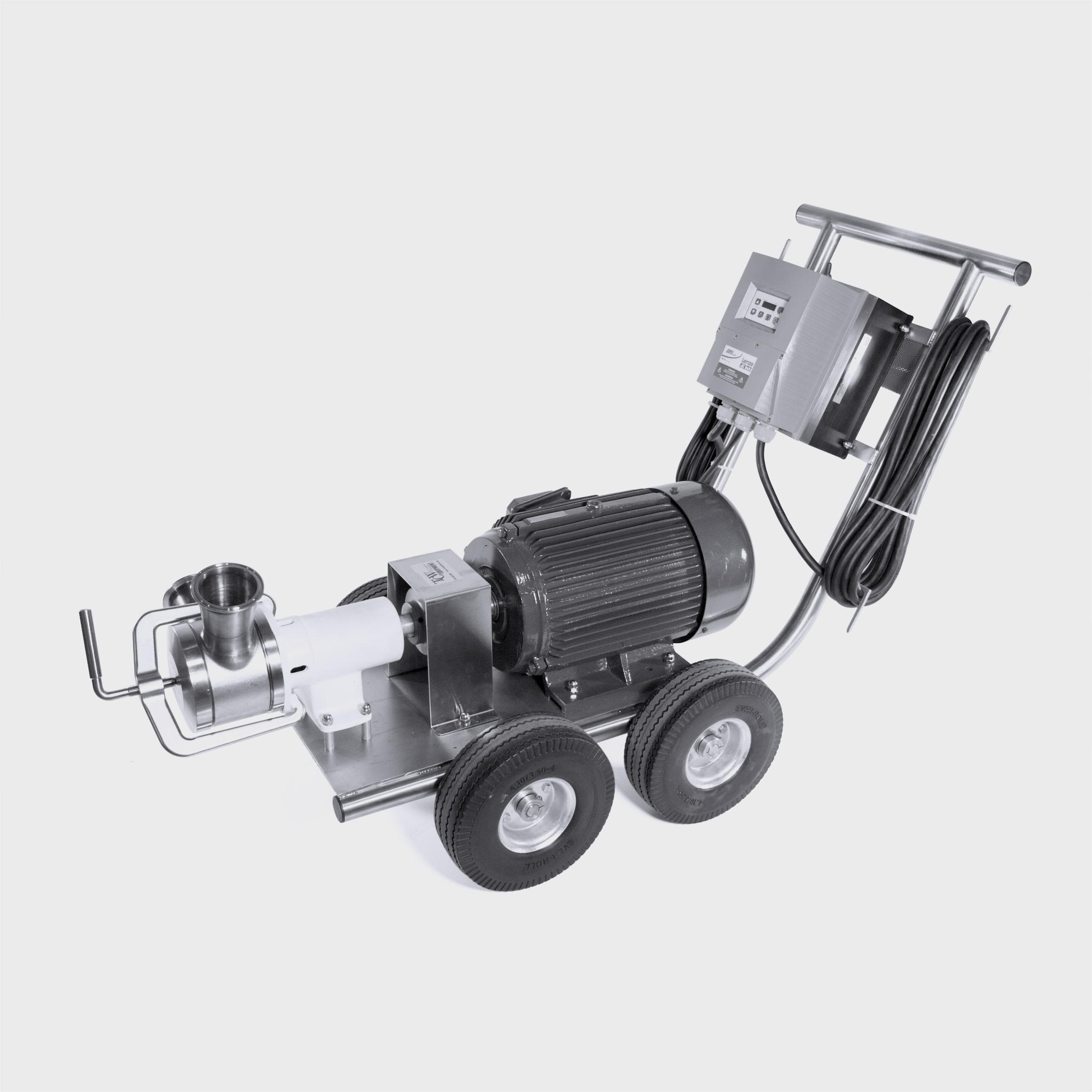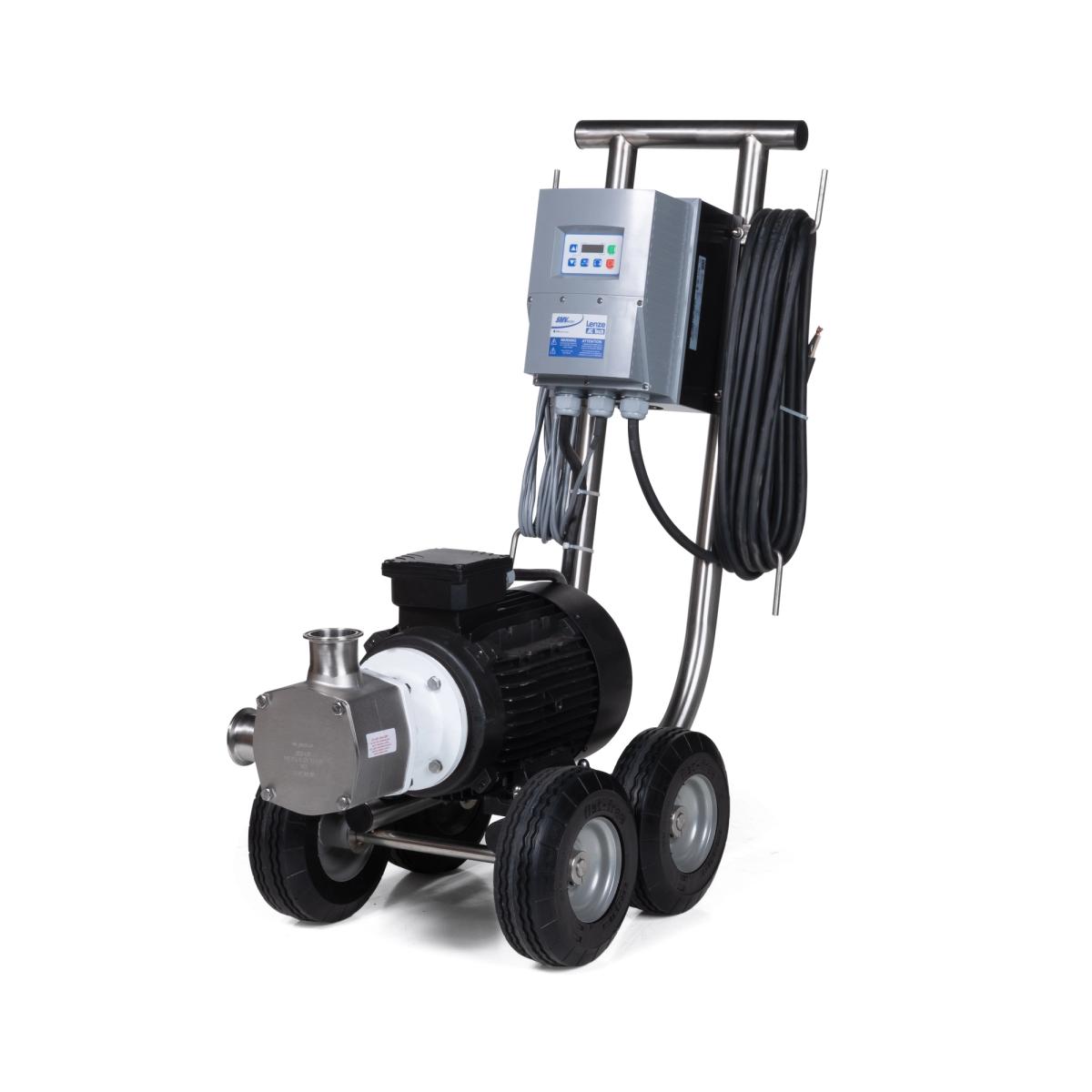
The Guide to Flexible Impeller Pumps
Flexible Impeller Pumps are quite often the first pump that a facility will buy. Sometimes they're the last pump they need to buy. They are rugged, versatile, and uncomplicated in design. We sell Jabsco flexible impeller pumps, and have sold them for going on fifty years. Our statements and assumptions here about flexible impeller pumps will reflect that. If you are considering a pump from another manufacturer, your mileage may vary.
How do they work?
Flexible impeller pumps use a motor to rotate an impeller with flexible blades in a sealed head. Take a look at the picture below of a typical flexible impeller pump head.

CC BY-SA 3.0
You'll notice that although the impeller is round, the body is not. There's a flat spot inside the pump head at the top. This flat spot causes the impeller blades to alternately compress and relax. When the blades reach the flat spot they compress and push liquid out. When the impeller blades relax the pump head sucks liquid in. This compression/expansion cycle happens very rapidly, hundreds of times or more per minute. This produces a smooth, steady flow. If you are more of a visual learner you can watch this video from Jabsco that shows a flexible impeller pump in action.
What are they good for?
Flexible impeller pumps are very versatile. They can be used anywhere you need smooth, steady, low-shear flow. They're good at handling thin and thick liquids alike. They can pass sharp or aggressive solids with low chances of impeller damage.
Because of their smooth flow they are good for filtration, which requires smooth flow without pulsations against a pressurized head.
When equipped with a remote speed control they are often used for barrel transfer applications.
In general they are good for pumping wine, must, mash, low-proof spirits, beer, water, milk, and molasses.
What aren't they good for?
Flexible impeller pumps are also not good for situations where there is the potential that the pump may end up running dry for longer than about 30-60 seconds. Since the head is cooled by the liquid it is pumping, running the pump dry won't give the impeller a chance to cool down, and it will cause the impeller to break down. Of course, if this happens it isn't the end of the world. Just clean the pump head and replace the impeller. Still, running the pump dry is the number one reason for prematurely damaged impellers, so it's important to have someone monitoring the pump to make sure that it's always transferring, and it must be shut off soon after all liquid has been transferred.
Pumping Solids
Large flexible impeller pumps make great pumps for moving solids when paired with an auger screw hopper that feeds the solids to the inlet of the pump.
People often ask us if they can use smaller impeller pumps like our Jabsco SQN 20 to move fermented red must. The short answer is no. Flexible impeller pumps with an inlet/outlet smaller than about 2.5 inches are not good for pumping must. 2.5 inch Tri Clamp inlet/outlet is the bare minimum we recommend for pumping must.
Maintenance
Maintenance of Jabsco pumps usually comes down to checking and, if necessary, replacing the following parts:
- Impeller: depending on how often you use the pump and how hard you are on the impeller you may need to replace this once every few years, or a couple of times a year.
- O-Rings: The front and rear o-ring that keep the housing sealed, and the head from leaking. These are cheap, and it's a good idea to swap them out yearly.
- Mechanical Seal: These are usually replaced once every few years, again depending on usage.
- Seal Seat: Like the mechanical seal, it can usually be replaced every few years unless you're noticing a leak from behind the pump's head.
That's it. The life of the impeller can be greatly lengthened if you take it out regularly to rinse it off and leave it out of the pump when the pump won't be used for long periods of time.
What's the best Jabsco Flexible Impeller Pump?
In our opinion, the best Jabsco Flexible Impeller Pump is the SQN 100.

It's the largest of the close-coupled heads Jabsco makes (close-coupled means that the motor is directly connected to the head. No belts, gear reducers or other power transmission in between). As such, users can usually get very good flow rates without having to run the pump at full speed. Anytime you can avoid running a pump at full speed it will invariably live longer and transfer more gently. The full-throated inlet and outlet can pass larger solids without issue. While it's not quite a must pump—it's just 2" TC—it's the best flexible impeller wine pump on the market.
- © 2024 TCW Equipment, LLC
- Phone: (707) 963-9681
- Monday–Friday, 8–5 pm PT